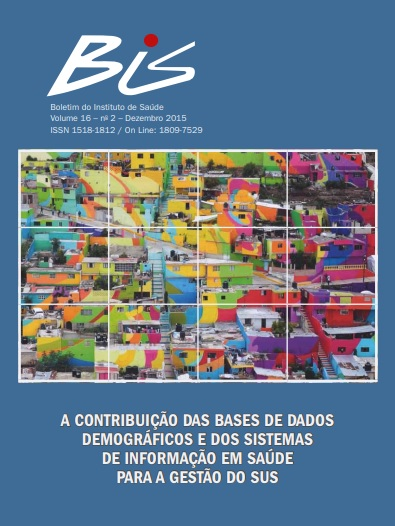Abstract
Recently, researches of the University of São Paulo, Brazil, pro- the University of São Paulo, Brazil, proposed NOVA, a food classification that makes important the extension and the purpose of the kind of processing the food before it is consumed by people. In this classification, food is ranked in four groups: 1 – in natura food or slightly processed food; 2 – processed culinary ingredients; 3 – processed food; 4 – overprocessed food. Studies from many countries using as data researches on food purchasing, surveys on individual consumption and supermarket products analysis showed that overprocessed food present a greater amount of energetic density, sugar, total, saturated and trans fat and an inferior amount of fibers, vitamins and minerals than the other food group. Studies performed in Brazil show significant association among the consumption of overprocessed food and metabolic syndrome in teenagers, dyslipidemia in children and obesity in all ages. Facing obesity and non-transmissible chronic diseases requires actions that stop the replacing of in natura or slightly processed food and its culinary cooking for overprocessed food. The evidences and considerations stated above have implications for the monitoring of the pattern food consumption of the population and for the creation of public policy.
References
2. Bielemann RM, Motta JVS, Minten GC, Horta BL, Gigante DP. Consumption of ultra-processed foods and their impact on the diet of young adults. Rev Saude Publica. 2015;49:28.
3. Canella DS, Levy RB, Martins AP, Claro RM, Moubarac JC, Baraldi LG, et al. Ultra-processed food products and obesity in Brazilian households (2008-2009). PLoS One.2014;9:e92752.
4. Crovetto MM, Uauy R, Martins AP, Moubarac JC, Monteiro C. Household availability of ready-to-consume food and drink products in Chile: impact on nutritional quality of the diet. Rev Med Chil. 2014;142:850-8.
5. Louzada ML, Baraldi LG, Steele EM, Martins AP, Canella DS, Moubarac J, et al. Consumption of ultra-processed foods and obesity in Brazilian adolescents and adults. Prev Med. 2015;81:9-15.
6. Louzada ML, Martins AP, Canella D, Baraldi L, Levy R, Claro R, Moubarac JC. Ultra-processed foods and the nutritional dietary profile in Brazil. Rev Saude Publica.2015;49(38):1-11.
7. Louzada ML, Martins AP, Canella DS, Baraldi LG, Levy RB, Claro RM, et al. Impact of ultra-processed foods onmicronutrient content in the Brazilian diet. Rev Saude Publica. 2015;49(45):1-8.
8. Luiten CM, Steenhuis IH, Eyles H, Mhurchu CN, Waterlander WE. Ultra-processed foods have the worst nutrient profile, yet they are the most available packaged products in a sample of New Zealand supermarkets. Public Health Nutr. 2015;29:1-9.
9. Ministério da Saúde. Guia Alimentar da População Brasileira. Brasília (DF); 2014.
10. Monteiro CA, Cannon G, Levy RB, Claro RM, Moubarac JC. The Food System. Ultra-processing. The big issue for nutrition, disease, health, well-being. World Nutrition.2012;3:527-69.
11. Monteiro CA, Levy RB, Claro RM, Castro IR, Cannon G. A new classification of foods based on the extent and purpose of their processing. Cad Saude Publica. 2010;26:2039-49.
12. Monteiro CA, Levy RB, Claro RM, Castro IR, Cannon G. Increasing consumptionof ultra-processed foods and likely impact on human health: evidence from Brazil. Public Health Nutr. 2011;14:5-13.
13. Moreira PV, Baraldi LG, Moubarac JC, Monteiro CA, Newton A, Capewell S, et al. Comparing different policy scenarios to reduce the consumption of ultra-processed foods in UK: impact on cardiovascular disease mortality using a modelling approach. PLoS One.2015;10:e0118353.
14. Moubarac JC, Parra D, Cannon G, Monteiro CA. Food classification systems based on food processing: significance and implications for policies and actions. A systematic literature review and assessment. Current Obesity Reports. 2014;3:256-72.
15. Moubarac JC, Martins AP, Claro RM, Levy RB, Cannon G, Monteiro, C.A. Consumption of ultra-processed foods and likely impact on human health. Evidence from Canada. Public Health Nutr. 2013;16:2240-8.
16. Organização das Nações Unidas. Guidelines on the collection of information on food processing through food consumption surveys. Rome: ONU; 2015.
17. Organização Panamericana de Saúde. Ultra-processed food and drink products in Latin America: Trends, impact on obesity, policy implications. Washington D.C.: OPAS; 2015.
18. Rauber F, Campagnolo PD, Hoffman DJ, Vitolo MR. Consumption of ultra-processed food products and its effects on children’s lipid profiles: a longitudinal study. Nutr Metab Cardiovasc Dis. 2015;25:116-22.
19. Tavares LF, Fonseca SC, Rosa MLG, Yokoo EM. Relationship between ultra-processed foods and metabolic syndrome in adolescents from a Brazilian Family Doctor Program. Public Health Nutr. 2012;15:82-7

This work is licensed under a Creative Commons Attribution 4.0 International License.
Copyright (c) 2015 Maria Laura da Costa Louzada, Renata Bertazzi Levy, Carlos Augusto Monteiro
